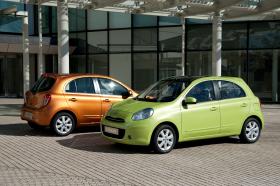

Let’s clear up some confusion which arose at the Geneva Motor Show about the Nissan V-Platform. The V stands for versatile and that’s exactly what it is.
We - Nissan - decided to develop a new platform at the end of 2004. This is not a replacement for the existing Micra-Clio B-Platform which will continue to evolve. The V-Platform is versatile enough to accommodate, without development or cost or any weight inefficiencies, customer requirements of all global markets whether RHD, LHD, diesel, petrol, Euro 3 to 6, and all worldwide crash test requirements including the US, EU and Japan; it can also support both B and A segment cars. New vehicles will be developed and launched on V or B platforms depending on their characteristics.
Initial work on the V-Platform started in 2005 and then we began detailed engineering work in Japan in 2007 in conjunction with our global suppliers.
The beauty of the Alliance involvement in this new platform’s success is not hinging on sharing cost. It’s largely about sharing knowledge. As you know, for example, we’re going to be using this platform at our new India factory in Chennai. Renault had more knowledge of sourcing in India than Nissan, so that was one way the Alliance helps us.
We’re also using Renault diesel engines and transmissions and on the gasoline engine, a common Nissan-Renault block. So really it’s the technical synergies that have helped us here.
A new platform is very expensive to develop so the way we have balanced the books if you like is to develop a 1m-a-year platform. There will be at least three models from this platform – hatch, sedan and compact MPV - by 2013, each of around 300,000 annual units.
This year we start production in Thailand, India and China while Mexico will be added next year. I’ll tell you about other production sites nearer the time. Nothing of this magnitude and ambition had been attempted by Nissan before. Building a series of models on the same platform at four overseas production sites for sale in over 160 countries was a huge undertaking, one that required a redefining of product planning and production methods.
We’re optimizing production by using more than 80 per cent localized parts; this is crucial to avoid unnecessary costs such as logistics and import duties. We’ve talked internally about this being a ‘breakthrough’ project because it’s not just a new platform, it’s a whole new way of building cars, moving away from our traditional, mature market manufacturing sites to new emerging market sites where demand for small yet sophisticated cars is growing.
print Tweet